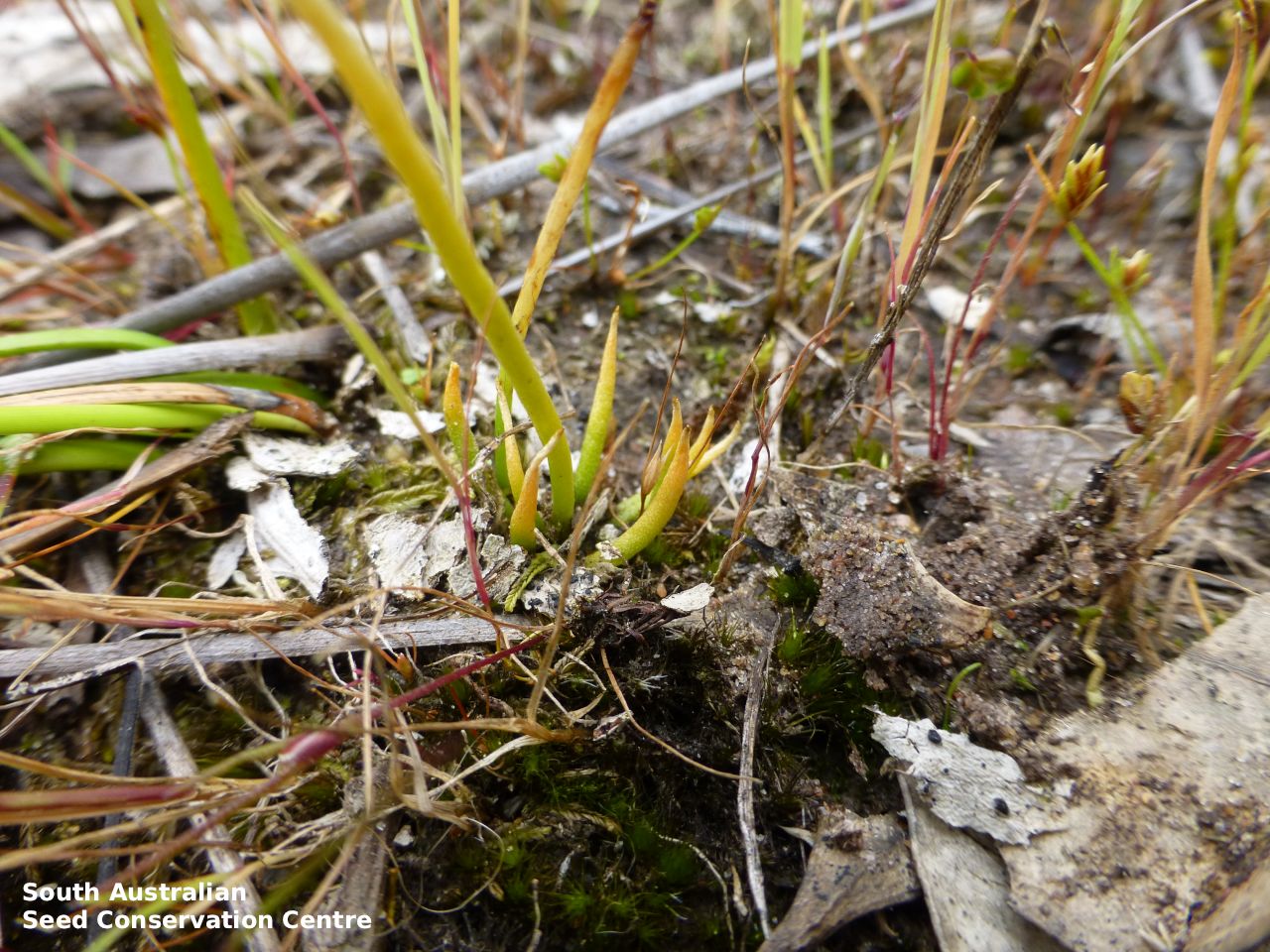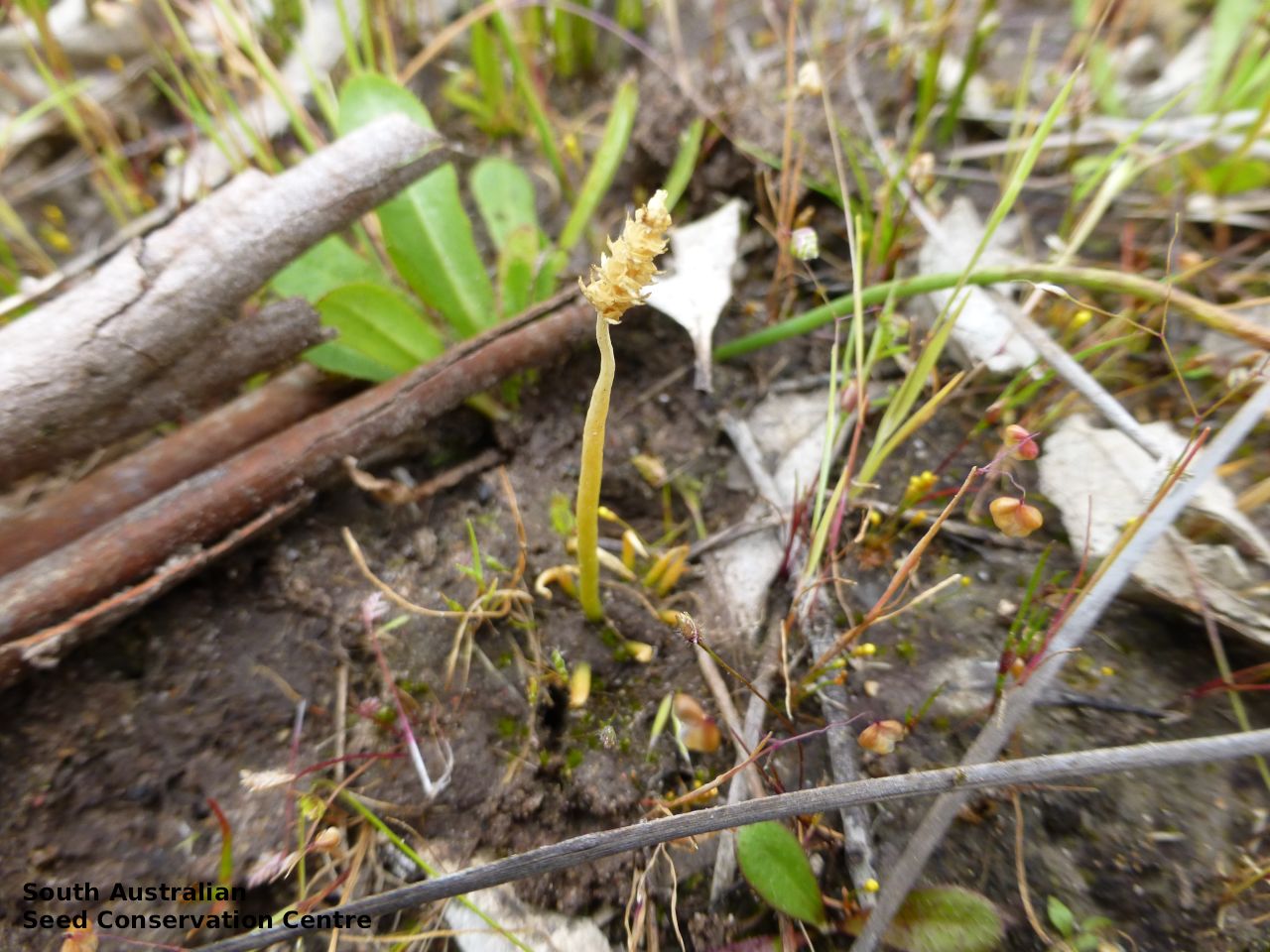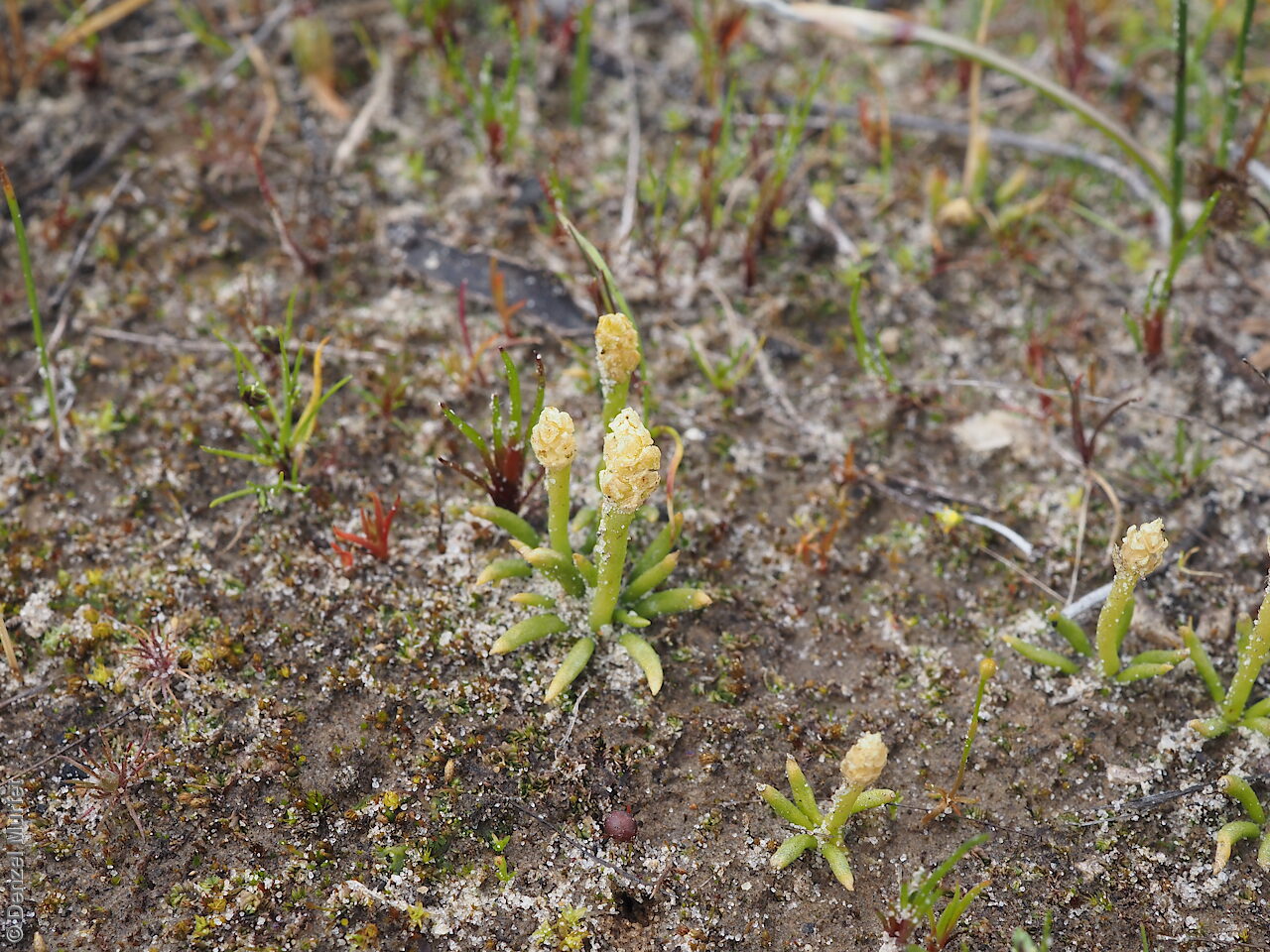












Botanical art
Prior names
Huperzia drummondii
Common names
Pigmy Club-moss
Etymology
Phylloglossum from the Greek 'phyllon' meaning leaf and 'glossa' meaning tongue; possibly referring to the strobilus sticking out like a tongue from the rosetted leaves.. Drummondii named after James Drummond (1786-1863), a Scottish born botanist and naturalist who was the curator of the government gardens in Cork, Ireland and an early settler in Western Australia.
Distribution and status
Found on the tip of the Eyre Peninsula, Kangaroo Island, southern Mount Lofty Ranges and the South-east, growing on moist sandy or clay soil, particularly after fire. Also found in Western Australia, Victoria and Tasmania. Native. Rare in South Australia. Rare in Tasmania. Common in the other states.
Herbarium regions: Eyre Peninsula, Murray, Southern Lofty, Kangaroo Island, South Eastern, Green Adelaide
AVH map: SA distribution map (external link)
Plant description
Tuberous, perennial grass-like herb to 5 cm tall. Tuber whitish, covered with papery scales, usually with one lateral root. Leaves usually less than 10, rosetted at apex of tuber, linear, to 2 cm long, fleshy. Strobili (a cone-like structure consisting of sporophylls) terminal to 7 mm long, on leafless, fleshy stalk up to 4 cm long. Grow during winter and spring Fruits are sporophylls spirally arranged, closely overlapping, spreading when ripe, broadly ovate-triangular. Sporangia in axil of each sporophyll, broad, kidney-shaped, pale yellow. Seeds are pale yellow broad kidney-shaped sporangia in axil of each sporophyll.
Seed collection and propagation
Collect seeds between August and November. Collect strobili that are turning yellow, these will contain mature sporohylls with spores. Place them in a seal paper bag to prevent spores from fulling out. Leave fronds in the paper bag to dry. The spores will fall off naturally or give the fronds a gentle shake. Use a very fine sieve to separate any unwanted material. Be careful as the spores are very fine. Store spores in an air tight container in a cool and dry place or in a -20oC freezer.